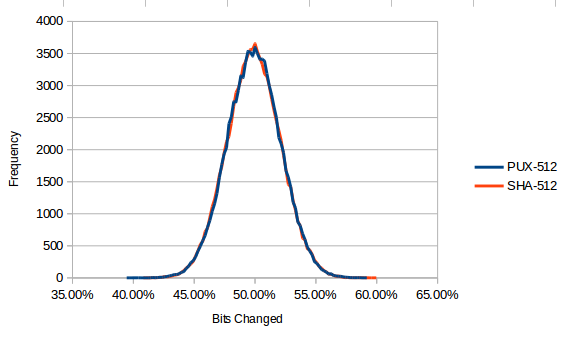This question follows on from my answer to calculation-of-the-avalanche-effect-coefficient earlier. I have reproduced the graph for this question.
Consider the red line which represents the number of bits changed for a single flipped input bit to SHA-512. This is for 100,000 random bit flips. The graph is normal, as expected for a full avalanche effect. From preparing this graph, I can say that the mean (of course) is 256 bits, which is 512 /2. As expected. (I actually get 255.5 but that could be my fault).
The standard deviation of this normal curve is approximately 11.3 obtained empirically. That's for a SHA hash with a block size of 512 bits.
Q. Is there a calculable mathematical relationship between the standard deviation and the block size, or must it always be determined empirically?

